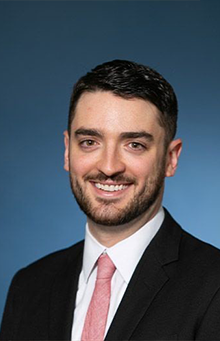Nighttime noise levels for patients on the South 5 unit of UMass Memorial Medical Center Memorial Campus got a little quieter after a team of medical and advanced practice nursing students and resident physicians carried out a quality improvement project to improve inpatient sleep.

|
The project focused on South 5, a 33-bed medical and surgical inpatient unit with both single and double rooms. Led by Nick Hebda, SOM ’21, the project team included medical students Alicia Lamoureux, SOM’21, Ayan Purkayastha, SOM’21, and Katherine Sadaniantz, SOM ’21; GSN students Cathleen Cuddihy, Ezequiel De Leon and Aisling Ryan; and Nancy Anoruo, MD, MPH; and Natasha Resendes, MD, who were UMMS residents at the time of the project.
“We collaborated through the Interprofessional Trainee Quality Council,” said Hebda. “The council brings students from the three schools together to conduct quality improvement projects on a variety of issues and topics. While brainstorming ways that our team could actually make a difference, we ultimately decided that exploring sleep quality for our inpatients would be a great option.”
“Having worked nights on the South 5 floor, which is one of the larger units at UMass Memorial, I witnessed the need for regulated noise levels, that way patients can obtain proper sleep cycles and heal accordingly,” said De Leon. “We observed a high volume of activity on the floor overnight, especially during handoffs and rounds, which can occur as late as 11 p.m. and as early as 3 a.m. We felt it was important to prevent nonurgent noises and interruptions for the sake of patients’ health and well-being.”
With initial data collection complete, the team was able to identify common sources of overnight noise on the unit, which included in-person and phone conversations, intercom use, televisions and bed alarms. They completed a root cause analysis to determine important factors leading to some of these overnight noises and brainstormed interventions with the ultimate goal of improving patient perception of overnight noise in order to facilitate better sleep patterns.
“We narrowed it down to establishing quiet hours on the unit from 10 p.m. to 5 a.m. This included monitoring and enforcing noise levels through the night, lights-out rules, limited interruptions and sleep aid kits for patients, which include items like ear plugs, eye masks, and access information for a specific in-hospital TV channel designed to elicit relaxation and promote sleep,” said Sadaniantz.
The team initiated its first countermeasure last fall, beginning with nurse and staff awareness and education at meetings and the creation of posters detailing the new quiet hours. Each night, the South 5 unit secretary would announce quiet hours over the floor’s intercom and then rounds would be conducted to check for overall noisiness and sleep kit distribution.
By last spring, a post-countermeasure survey showed an increase in patient satisfaction with nighttime noise levels.
“We concluded that with the installment of quiet hours, patients were more satisfied with overnight noise levels and fewer patients reported sleeping less than seven total hours a night,” said Hebda. “We also noted the importance of establishing patient expectations regarding overnight noise levels early in the course of inpatient stays in order to facilitate realistic goal-setting and improve the overall patient experience.”
Next steps for the team include ongoing efforts to maintain quiet hours as a routine protocol for the South 5 unit and staff and exploring other options for minimizing overnight noise and interruptions.
“Working together on this project has really opened our eyes to both patient care and interprofessional work environments,” said Sadaniantz.
“It’s great seeing that we were able to help bring some consistency to the floor,” said De Leon. “Overall, we have seen fewer patients complaining about sleep and more earplugs and headphones being handed out and used overnight. We are witnessing change that was not existent a year ago.”
Related story on UMassMed News:
WATCH: Graduate School of Nursing student Ezequiel De Leon seeks to care for vulnerable population